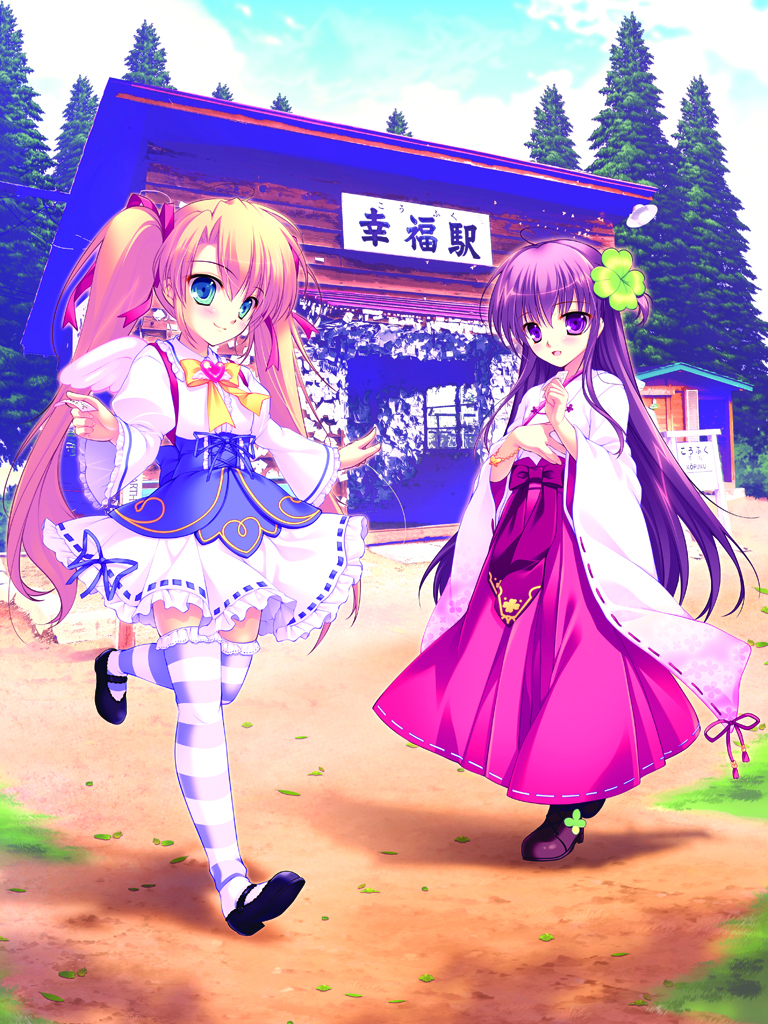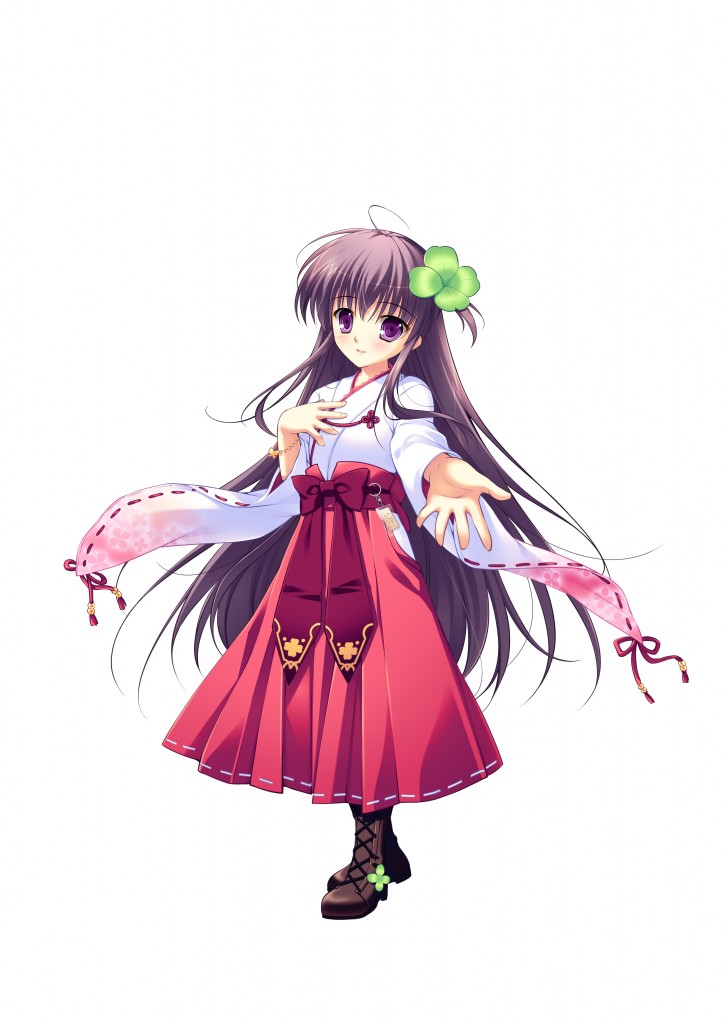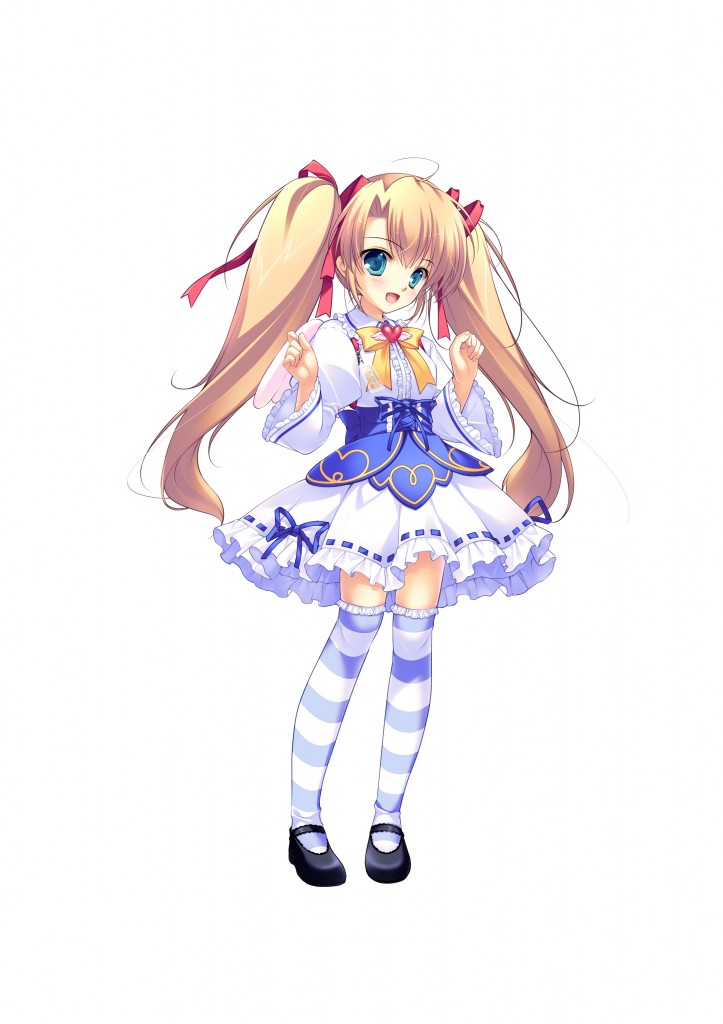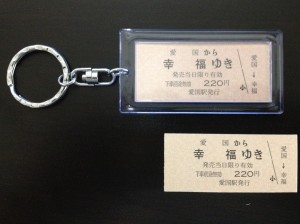 Sadly with Japan’s many recent economic woes, visitation to the remote stations of Kofuku and Aikoku has been low. So in an effort to drum up some visitors, the local communities did what anyone would do in this situation. They made some gods.
Sadly with Japan’s many recent economic woes, visitation to the remote stations of Kofuku and Aikoku has been low. So in an effort to drum up some visitors, the local communities did what anyone would do in this situation. They made some gods.
Nestled in the heart of Hokkaido lie two train stations. One was called Aikoku (Love Country) Station, its name being based on the word for “patriotic”. Down the line was Kofuku (Happiness) Station whose name was a lucky corruption of an old aboriginal name for the area.
During the 70’s there was a cute fad centered on these two rural stations, where tourists flocked to buy a train ticket which read “from Love Country bound for Happiness”. Like all fads, this one eventually petered out and the train line running between these two stations closed down in 1987. However, both stations remained as landmarks for the area. On the outside of Kofuku’s station house, visitors often post their wishes for happiness.
However, with tourism down recently the community has rallied for a new PR campaign by creating what has got to be Japan’s first ever moe station goddesses. In a nutshell, moe (pronounced mo-eh) is a style of drawing adolescent girls, sometimes used to humanize an abstract concept.
It’s kind of like the paperclip that used to talk to you on Microsoft Office that represented the software itself. If that paperclip were a 13 year-old girl with a really complicated outfit and pigtails it would be so moe it would explode.
And so we have Miyuki and Megumi; two plucky young girls out to represent Kofuku and Aikoku stations respectively. Miyuki is the strong silent type, but her quiet demeanor runs deep. Visitors to Kofuku station will find that her songs and comforting power will lead their way to happiness. She also recently started her own blog on the station’s website.
Megumi, on the other hand, is more the precocious type. Her forte is making love predictions for lucky visitors and generally spreading the love where ever she goes like a cupid. Both girls were designed by an illustrator native to Hokkaido.
It may seem odd to create deities in order to attract sightseeing revenue, but in Japan religion and tourism are strange yet very close bedfellows. Many domestic tourists in Japan go for the temples and to pray to the various gods but stay for the food, hotels, and shopping.
This is likely the first time anyone in Japan has made a defunct train station the home to a god rather than a temple or shrine. It’s also an illustration to how the word god (kami in Japanese) doesn’t have the same narrow focus as the concept does in other countries and religions.
Source: Press Release via IT Media (Japanese)
▼Miyuki: Goddess of Kofuku Station
▼Megumi: Goddess of Aikoku Station
▼A souvenir ticket which reads “From Aikoku to Kofuku” or “From Love Country to Happiness”




 Shiraishi Island needs YOUR character ideas!
Shiraishi Island needs YOUR character ideas! Taiwan pulls ahead of Japan in moe race, plasters subway cars with doe-eyed girls
Taiwan pulls ahead of Japan in moe race, plasters subway cars with doe-eyed girls Taiwanese subway debuts second anime mascot, net users experience moe overload
Taiwanese subway debuts second anime mascot, net users experience moe overload 12 beautiful Japanese train stations by the sea
12 beautiful Japanese train stations by the sea Better know a train nerd: 36 different classifications for Japan’s “densha otaku”
Better know a train nerd: 36 different classifications for Japan’s “densha otaku” McDonald’s new Happy Meals offer up cute and practical Sanrio lifestyle goods
McDonald’s new Happy Meals offer up cute and practical Sanrio lifestyle goods More foreign tourists than ever before in history visited Japan last month
More foreign tourists than ever before in history visited Japan last month All-you-can-drink Starbucks and amazing views part of Tokyo’s new 170 meter-high sky lounge
All-you-can-drink Starbucks and amazing views part of Tokyo’s new 170 meter-high sky lounge Starbucks reopens at Shibuya Scramble Crossing with new look and design concept
Starbucks reopens at Shibuya Scramble Crossing with new look and design concept Beautiful Sailor Moon manhole cover coasters being given out for free by Tokyo tourist center
Beautiful Sailor Moon manhole cover coasters being given out for free by Tokyo tourist center The oldest tunnel in Japan is believed to be haunted, and strange things happen when we go there
The oldest tunnel in Japan is believed to be haunted, and strange things happen when we go there Disney princesses get official manga makeovers for Manga Princess Cafe opening in Tokyo
Disney princesses get official manga makeovers for Manga Princess Cafe opening in Tokyo Is the new Shinkansen Train Desk ticket worth it?
Is the new Shinkansen Train Desk ticket worth it? Arrest proves a common Japanese saying about apologies and police
Arrest proves a common Japanese saying about apologies and police An extremely simple trick to spice up plain rice for a refreshing, citrusy summer treat
An extremely simple trick to spice up plain rice for a refreshing, citrusy summer treat We try out “Chan Ramen”, an underground type of ramen popular in the ramen community
We try out “Chan Ramen”, an underground type of ramen popular in the ramen community Beautiful new Final Fantasy T-shirt collection on the way from Uniqlo【Photos】
Beautiful new Final Fantasy T-shirt collection on the way from Uniqlo【Photos】 Foreign English teachers in Japan pick their favorite Japanese-language phrases【Survey】
Foreign English teachers in Japan pick their favorite Japanese-language phrases【Survey】 There’s a park inside Japan where you can also see Japan inside the park
There’s a park inside Japan where you can also see Japan inside the park Japanese convenience store packs a whole bento into an onigiri rice ball
Japanese convenience store packs a whole bento into an onigiri rice ball Studio Ghibli releases Kiki’s Delivery Service chocolate cake pouches in Japan
Studio Ghibli releases Kiki’s Delivery Service chocolate cake pouches in Japan Japan’s bone-breaking and record-breaking roller coaster is permanently shutting down
Japan’s bone-breaking and record-breaking roller coaster is permanently shutting down New definition of “Japanese whiskey” goes into effect to prevent fakes from fooling overseas buyers
New definition of “Japanese whiskey” goes into effect to prevent fakes from fooling overseas buyers Foreign passenger shoves conductor on one of the last full runs for Japan’s Thunderbird train
Foreign passenger shoves conductor on one of the last full runs for Japan’s Thunderbird train Our Japanese reporter visits Costco in the U.S., finds super American and very Japanese things
Our Japanese reporter visits Costco in the U.S., finds super American and very Japanese things Kyoto bans tourists from geisha alleys in Gion, with fines for those who don’t follow rules
Kyoto bans tourists from geisha alleys in Gion, with fines for those who don’t follow rules Studio Ghibli unveils Mother’s Day gift set that captures the love in My Neighbour Totoro
Studio Ghibli unveils Mother’s Day gift set that captures the love in My Neighbour Totoro Domino’s Japan now sells…pizza ears?
Domino’s Japan now sells…pizza ears? New Japanese KitKat flavour stars Sanrio characters, including Hello Kitty
New Japanese KitKat flavour stars Sanrio characters, including Hello Kitty Sales of Japan’s most convenient train ticket/shopping payment cards suspended indefinitely
Sales of Japan’s most convenient train ticket/shopping payment cards suspended indefinitely Sold-out Studio Ghibli desktop humidifiers are back so Totoro can help you through the dry season
Sold-out Studio Ghibli desktop humidifiers are back so Totoro can help you through the dry season Japanese government to make first change to romanization spelling rules since the 1950s
Japanese government to make first change to romanization spelling rules since the 1950s Ghibli founders Toshio Suzuki and Hayao Miyazaki contribute to Japanese whisky Totoro label design
Ghibli founders Toshio Suzuki and Hayao Miyazaki contribute to Japanese whisky Totoro label design Doraemon found buried at sea as scene from 1993 anime becomes real life【Photos】
Doraemon found buried at sea as scene from 1993 anime becomes real life【Photos】 Tokyo’s most famous Starbucks is closed
Tokyo’s most famous Starbucks is closed One Piece characters’ nationalities revealed, but fans have mixed opinions
One Piece characters’ nationalities revealed, but fans have mixed opinions We asked a Uniqlo employee what four things we should buy and their suggestions didn’t disappoint
We asked a Uniqlo employee what four things we should buy and their suggestions didn’t disappoint Princesses, fruits, and blacksmiths: Study reveals the 30 most unusual family names in Japan
Princesses, fruits, and blacksmiths: Study reveals the 30 most unusual family names in Japan Studio Ghibli’s new desktop Howl’s Moving Castle will take your stationery on an adventure
Studio Ghibli’s new desktop Howl’s Moving Castle will take your stationery on an adventure Amazing time-lapse-style video shows 150-year history of the growth of train stations in Japan
Amazing time-lapse-style video shows 150-year history of the growth of train stations in Japan Studio Ghibli releases its first-ever train jingles, to be played at one special Japanese station
Studio Ghibli releases its first-ever train jingles, to be played at one special Japanese station Ichikawa-Mama station gets linguistic makeover just in time for Mother’s Day
Ichikawa-Mama station gets linguistic makeover just in time for Mother’s Day New JR Shinkansen-inclusive rail pass is a huge bargain, great way to help out a region in need
New JR Shinkansen-inclusive rail pass is a huge bargain, great way to help out a region in need Is it a Lawson or a train station? We investigate the mysterious Sekiguchi Station
Is it a Lawson or a train station? We investigate the mysterious Sekiguchi Station We channel Sen from Ghibli’s Spirited Away and travel to a Japanese train station by the sea
We channel Sen from Ghibli’s Spirited Away and travel to a Japanese train station by the sea Rest in peace, Tama – Japan’s stationmaster cat passes away at 16, company funeral to be held
Rest in peace, Tama – Japan’s stationmaster cat passes away at 16, company funeral to be held Japanese train station grows wine grapes on the platform
Japanese train station grows wine grapes on the platform Space agency in Japan has a surprising hidden girl in its visitor maps
Space agency in Japan has a surprising hidden girl in its visitor maps Taiwan’s moe train mascot’s new image song somehow reminds Japanese netizens of erotic games
Taiwan’s moe train mascot’s new image song somehow reminds Japanese netizens of erotic games Making trains meow-r fun: Japanese station master cats (and bunny!) strut their fluff【Pics】
Making trains meow-r fun: Japanese station master cats (and bunny!) strut their fluff【Pics】 Can you spot the hidden cats at this Tokyo train station?
Can you spot the hidden cats at this Tokyo train station? A visit to Japan’s train station that looks like a spaceport in the middle of nowhere【Photos】
A visit to Japan’s train station that looks like a spaceport in the middle of nowhere【Photos】 New Japanese train station has no entrance or exit, only used to admire the scenery
New Japanese train station has no entrance or exit, only used to admire the scenery Japan’s Moonlight Nagara train service ends, leaving a hole in overnight rail travel
Japan’s Moonlight Nagara train service ends, leaving a hole in overnight rail travel $2.34!? Cheapest bullet-train ride in Japan lasts 3 minutes, but memories are forever【Photos】
$2.34!? Cheapest bullet-train ride in Japan lasts 3 minutes, but memories are forever【Photos】
Leave a Reply